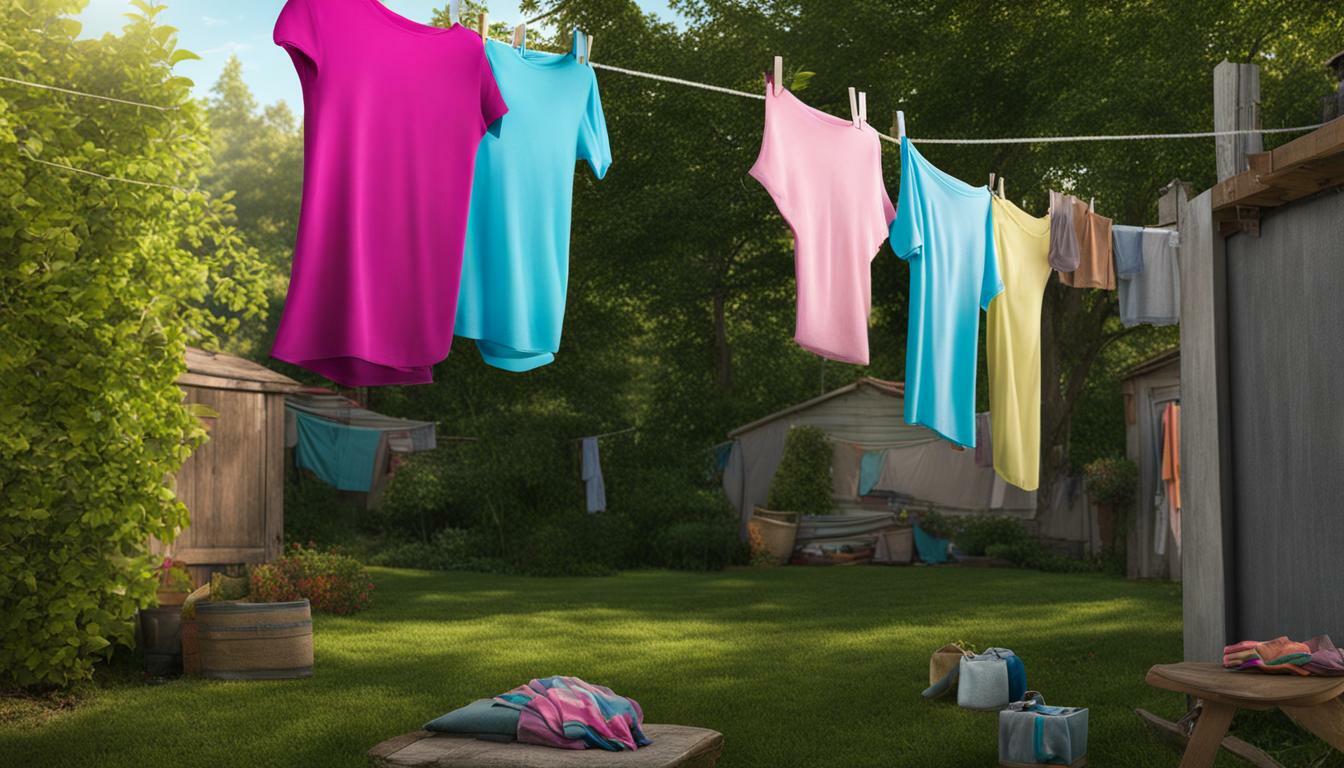Introduction
Welcome to the realm of laundry appliances, where we shall embark on a journey to unravel the timeless debate between top-load and front-load washers. As mundane as this topic may sound, choosing the right washer for your needs is of paramount importance.
After all, this is an investment that will accompany you through countless loads of laundry, and it’s crucial to make an informed decision. So, let’s dive in!
Brief Overview of the Topic
Before delving into the nitty-gritty details, it is vital to have a basic understanding of what sets these two types of washers apart. Top-load washers are what most people traditionally envision when they think about washing machines. They feature a vertical drum orientation and come in various sizes with different capacities.
On the other hand, front-load washers have revolutionized laundry appliances with their sleek design and modern functionality. With a horizontal drum orientation and a door located at the front, these machines employ a tumbling action to clean clothes effectively.
Importance of Choosing the Right Washer for Your Needs
Now that we have established that selecting the right washer is no trivial matter, let’s explore why it holds such significance. Your choice can impact various aspects of your laundry routine—efficiency, durability, energy consumption—in ways you may not immediately realize.
Certainly, one crucial factor to consider is how easy it will be to load and unload your laundry. Depending on your preferences or physical limitations, this can make all the difference in convenience and comfort during use.
Additionally, choosing between top-load or front-load washers can also affect other practical considerations such as available space in your laundry room or compatibility with existing plumbing connections. Moreover, both water usage and energy efficiency play significant roles in the ongoing cost of operating your washer.
By selecting a model that aligns with your preferences and the size of your household, you can potentially save money over time while also minimizing your environmental footprint. In essence, the decision between a top-load and front-load washer should not be taken lightly.
It is an investment in both functionality and convenience, with long-term implications for your laundry routine and budget. So, without further ado, let’s explore the pros and cons of each type to help you make an informed choice!
Understanding Top-Load Washers
Description and Design Features
Top-load washers have long been a staple in households, sporting a design that features a vertical drum orientation. This means that when you open the lid, you’ll find the drum standing upright, ready to accept your dirty laundry.
One notable distinction among top-load washers is the choice between an agitator or an impeller. Agitators are those cylindrical devices with fins or blades that move back and forth to agitate the clothes, while impellers are low-profile discs that use a gentle tumbling motion to clean your garments.
Advantages of Top-Load Washers
One of the biggest advantages of top-load washers is their convenience when it comes to loading and unloading laundry. With the lid located on top, you don’t have to bend down like a contortionist just to put your clothes inside or take them out. This makes it especially beneficial for those with back or knee issues who may find bending over for extended periods uncomfortable.
Additionally, top-load washers generally offer faster washing cycles and shorter wash times compared to their front-load counterparts. The vertical drum orientation allows for more efficient water distribution throughout the load, resulting in quicker cleaning action.
So if you’re constantly pressed for time and need clean clothes in a jiffy, then a top-load washer might be right up your alley. Whether you opt for an agitator or an impeller depends on your personal preference and laundry needs.
Agitators are known for their vigorous washing action as they forcefully move clothes around during the wash cycle. This can be advantageous when dealing with heavily soiled items or stubborn stains that require extra agitation power.
On the other hand, if you’re concerned about potentially rough treatment of delicate fabrics or prefer a gentler approach to cleaning, then an impeller might be the better choice. Impellers use a more subtle tumbling motion that is less likely to cause friction or tangling, making them suitable for delicate garments like silk or lace.
Overall, top-load washers offer a variety of design options and advantages that make them a popular choice among many households. From their easy loading and unloading capabilities to their faster washing cycles, these machines provide convenience and efficiency for getting your laundry done quickly and effectively.
Exploring Front-Load Washers
Description and design features
Front-load washers have gained popularity for their sleek design and efficient operation. Unlike top-load washers, which have a vertical drum orientation, front-load washers feature a horizontal drum orientation with a front-facing door.
This design allows for easier access to the drum, making loading and unloading laundry much more convenient. The door is usually equipped with a robust seal to prevent water leakage during the washing process.
Tumbling action for cleaning clothes
One of the distinctive features of front-load washers is their tumbling action, which provides a thorough cleaning experience. When you select a cycle on your front-load washer, it starts filling with water and then rotates the drum gently in both directions.
This tumbling motion helps lift dirt and stains from your clothes while ensuring that they are evenly soaked in detergent-infused water. The gentle yet effective cleaning action of front-load washers makes them suitable for delicate fabrics that require extra care.
Advantages of Front-Load Washers
Energy efficiency and water savings
Front-load washers are known for their remarkable energy efficiency and water-saving capabilities. Due to their horizontal drum design, these machines use less water compared to top-load models, ultimately resulting in reduced utility bills. Additionally, with advanced features like load sensing technology that adjusts water levels based on the size of the load, front-load washers optimize resource consumption while maintaining excellent cleanliness.
Gentle on clothes, reducing wear and tear
One of the most significant advantages of front-load washers is their gentle treatment of clothing items during each cycle. The tumbling action we discussed earlier ensures that your garments glide against each other instead of being agitated vigorously like in top-load machines with agitators.
This gentle washing approach greatly reduces wear and tear on fabrics, extending their lifespan and keeping them looking newer for longer. For those with delicate or expensive clothing items, front-load washers offer peace of mind by minimizing damage risks.
Factors to Consider When Choosing Between Top-Load and Front-Load Washers
A: Laundry room space requirements
When it comes to space requirements, top-load washers generally have a smaller footprint compared to front-load models. If you have limited laundry room space or plan to place your washer in a tight corner, a top-load washer might be more suitable.
On the other hand, front-load washers may require additional clearance because of the door’s swing. Ensure that you measure your available space carefully before making a decision to avoid any installation complications.
B: Washing capacity and load size flexibility
The washing capacity is an essential factor to consider when choosing between top-load and front-load washers. Generally, front-load washers have larger drum capacities compared to their top-loading counterparts.
This means they can accommodate larger loads of laundry at once, which is particularly advantageous for families or individuals dealing with bulkier items like comforters or blankets. However, if you frequently need to add forgotten clothes mid-cycle or have physical limitations that make bending difficult, a top-load washer with its easy access might be more suitable for your needs.
C: Water usage, energy efficiency, and cost savings
Front-load washers are renowned for their water-saving capabilities due to their innovative design and technology features like load sensing. They typically use less water per cycle compared to top-load washers with agitators.
This reduction in water consumption not only benefits the environment but also leads to lower monthly utility bills over time. Moreover, many front-loading models sport Energy Star ratings, indicating their high energy efficiency levels that further contribute to cost savings in the long run.
Maintenance, Durability, and Longevity
A: Cleaning tips for both top-load and front-load washers
To ensure optimal performance and longevity, regular cleaning is essential for both top-load and front-load washers. For front-load washers, it’s important to pay attention to preventing mold or mildew growth due to their airtight design. Wiping down the door seal and leaving it open after each use can help prevent moisture buildup.
Additionally, running a monthly cleaning cycle with vinegar or specialized washer cleaners can keep your machine fresh and odor-free. Top-load washers benefit from routine maintenance as well, including cleaning the agitator or impeller and checking for clogs in the drain pump filter.
Preventing mold or mildew growth in front-load washers
Front-load washers are more prone to mold or mildew growth compared to top-load models due to their seal-tight design. To prevent these issues, it’s crucial to adopt preventative measures such as wiping down the door seal after each use and leaving the door slightly open when not in use. In addition, using high-efficiency detergents that produce less suds can minimize residue accumulation inside the drum.
Conclusion
Choosing between a top-load and a front-load washer depends on various factors such as available space, washing capacity needs, water usage concerns, as well as maintenance considerations. Front-load washers offer advantages in terms of energy efficiency and gentle treatment of clothes but may require more space upfront for installation.
Meanwhile, top-loading machines are convenient if accessibility is a priority or if you have space constraints in your laundry room. Regardless of your choice, regular maintenance will ensure that your washer operates at its best while providing efficient cleaning results.
 Skip to main content
Skip to main content


